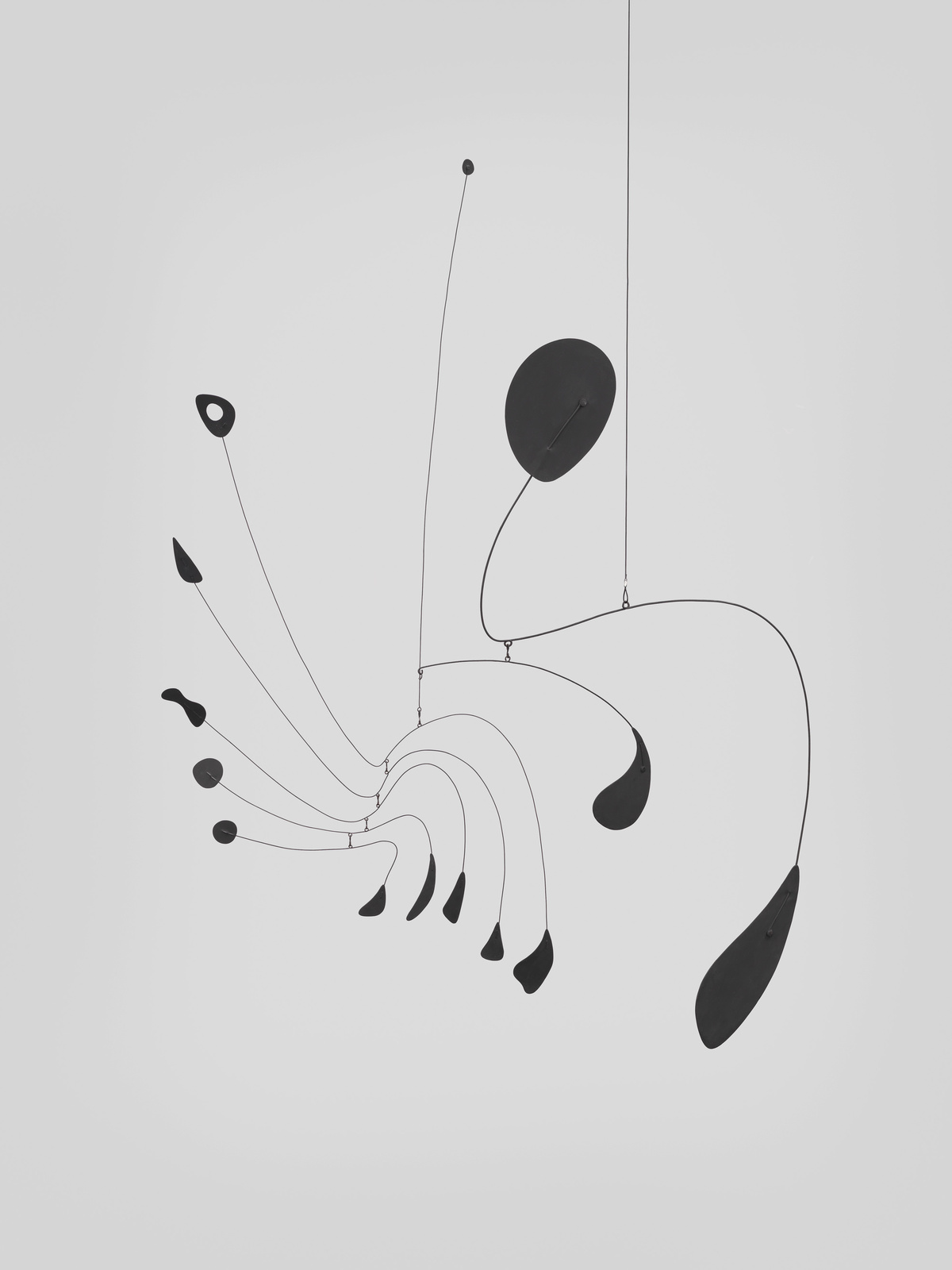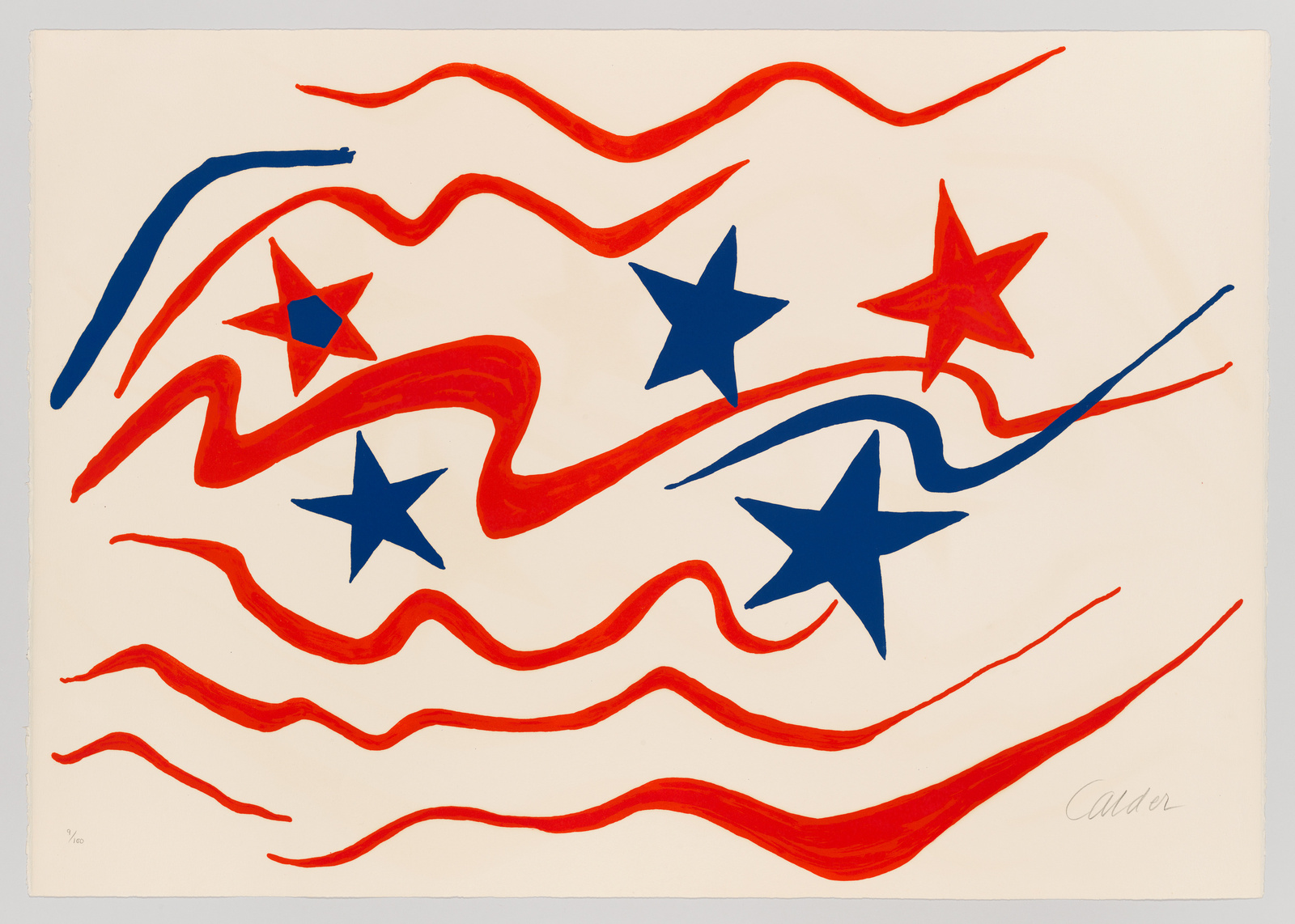0:00
Alexander Calder, Hanging Spider, 1940
0:00
Narrator: Alexander Calder called this hanging sculpture Spider. It doesn’t represent a spider in any straightforward way—for one thing, it seems to have more than eight legs. But as it moves with the breeze, it suggests a kind of spindly, daddy longlegs elegance. In the 1930s, Calder had absorbed the Surrealists’ love of biomorphic forms—shapes that suggested life, but were still somewhat abstract. He also picked up on their idea that accident had a role to play in art. This sculpture, with its almost-natural movements and subjugation to the vagaries of air currents, reflects both interests.
Calder invented this form of kinetic sculpture in 1932. He began calling such works mobiles—French for “moving”—at the suggestion of the artist Marcel Duchamp.

